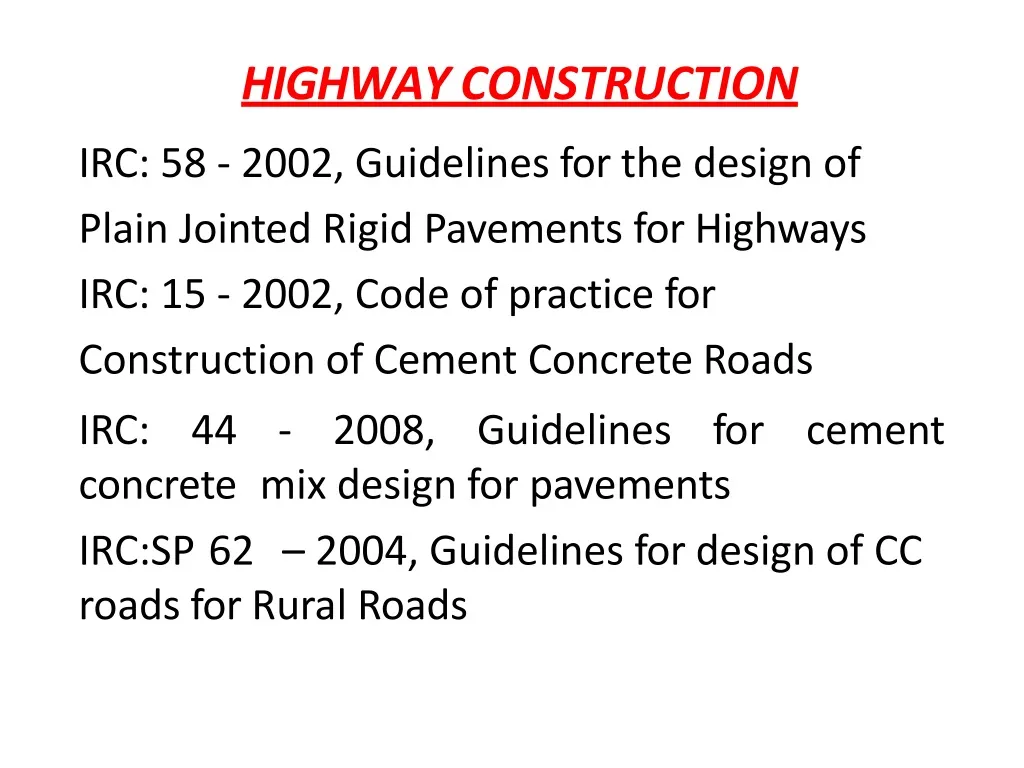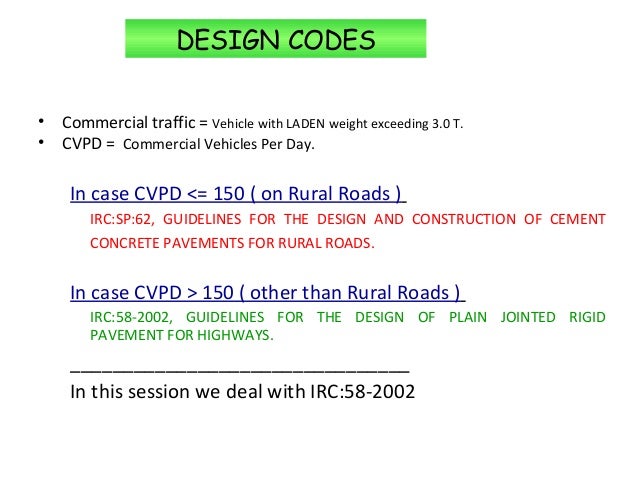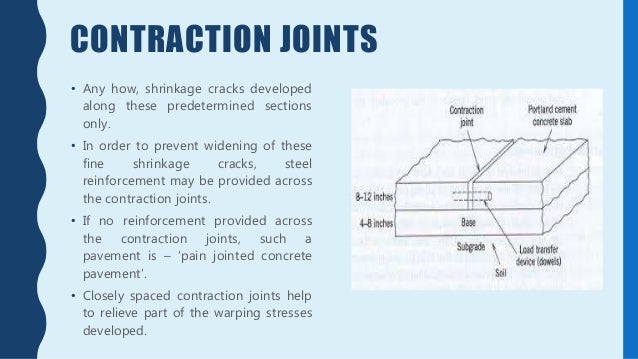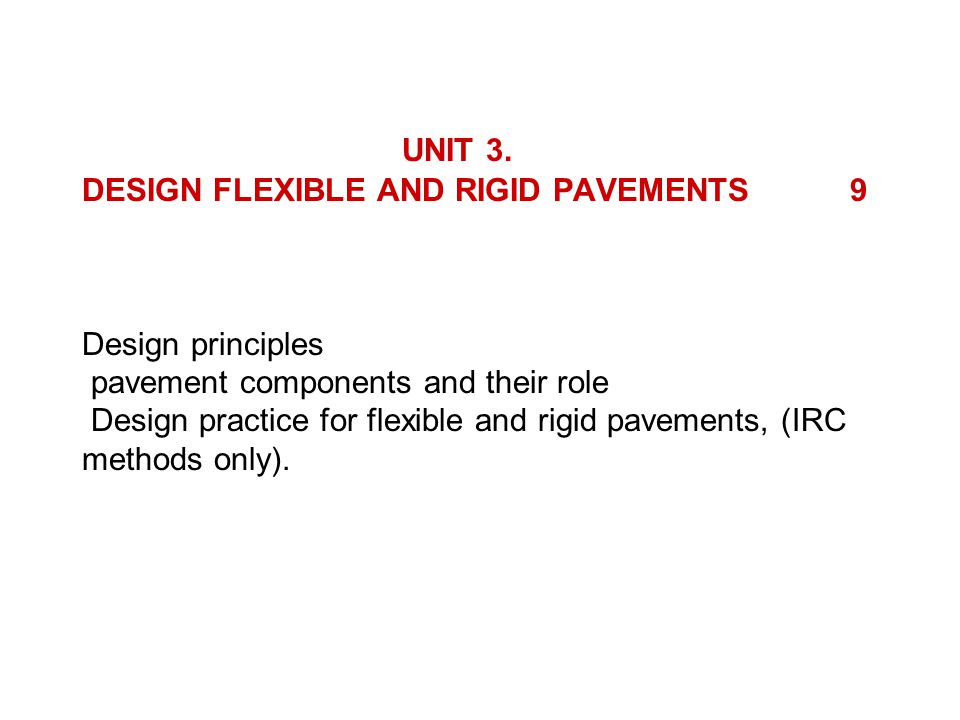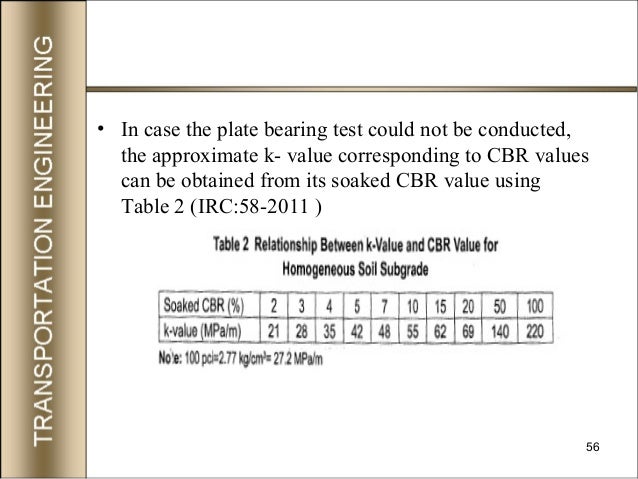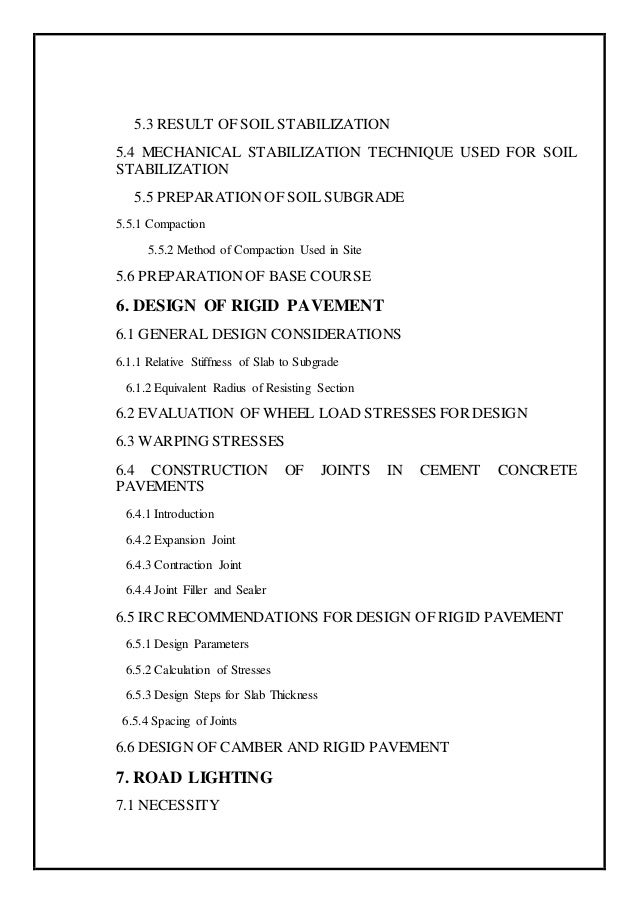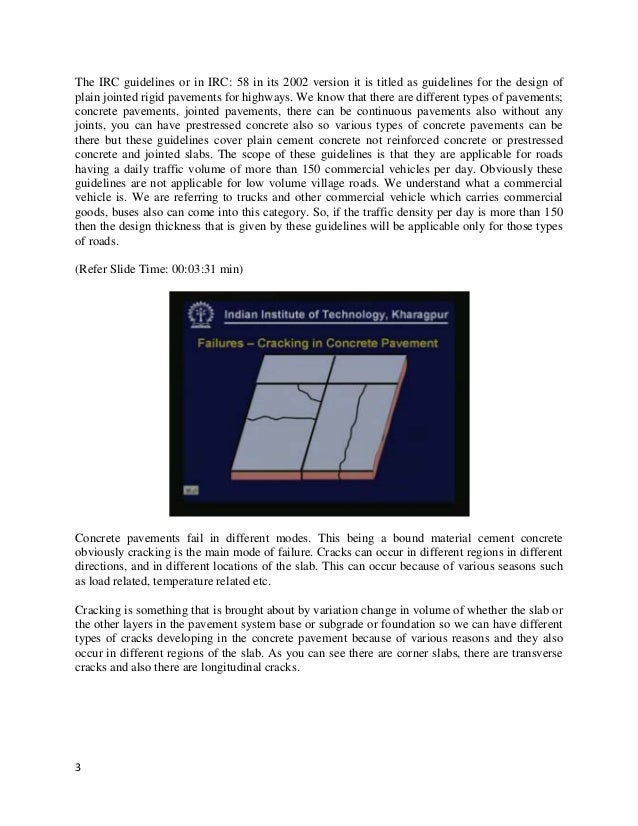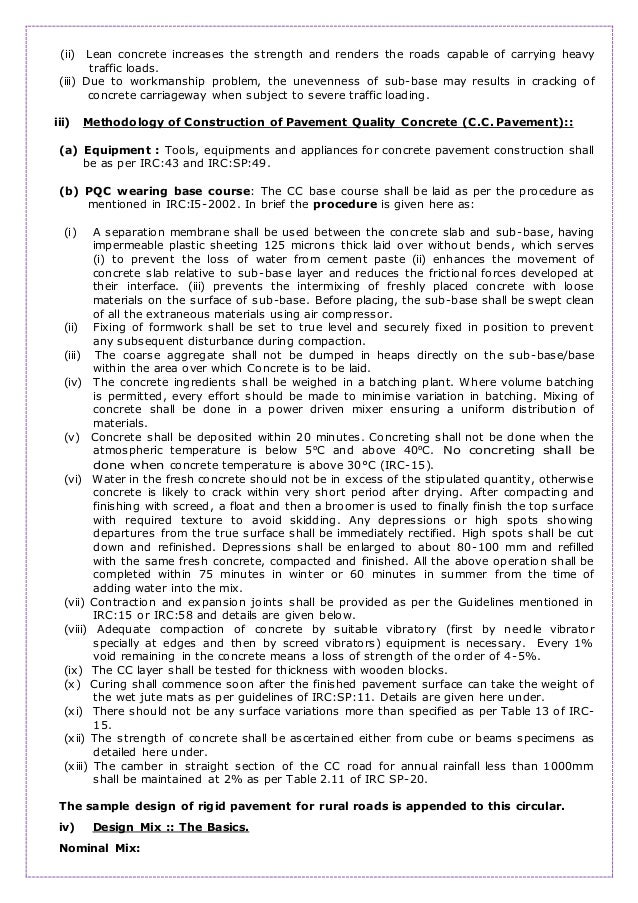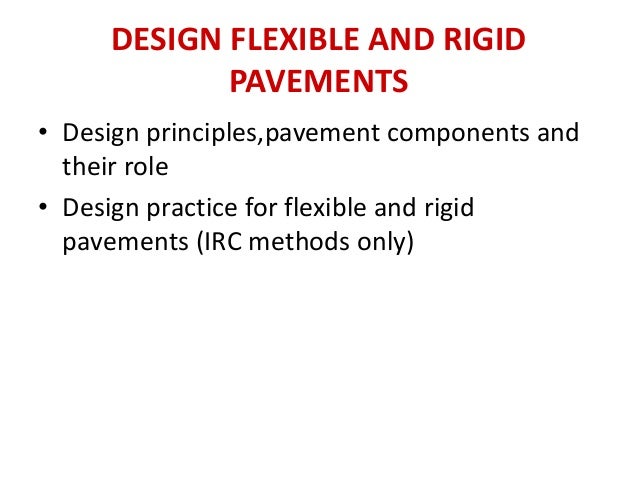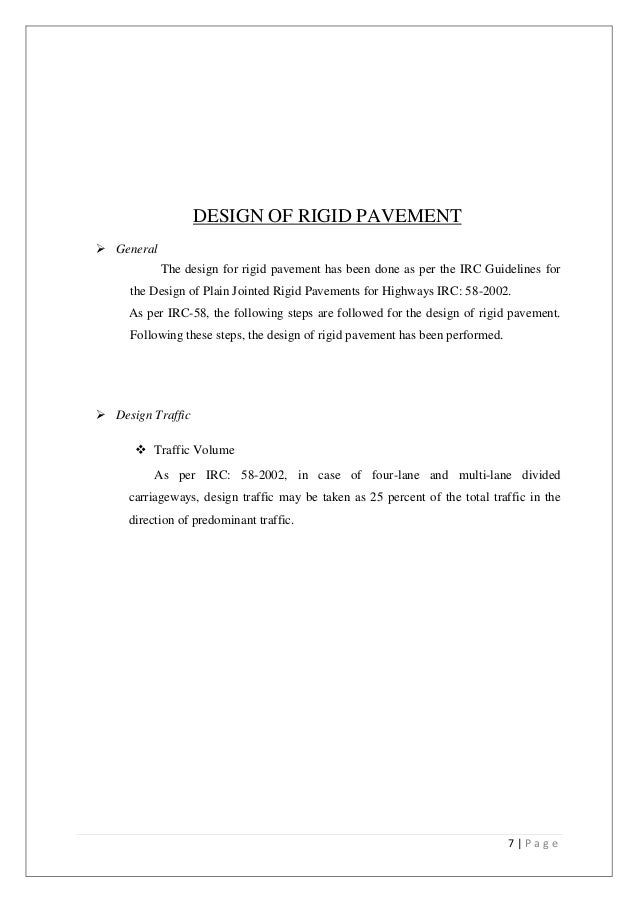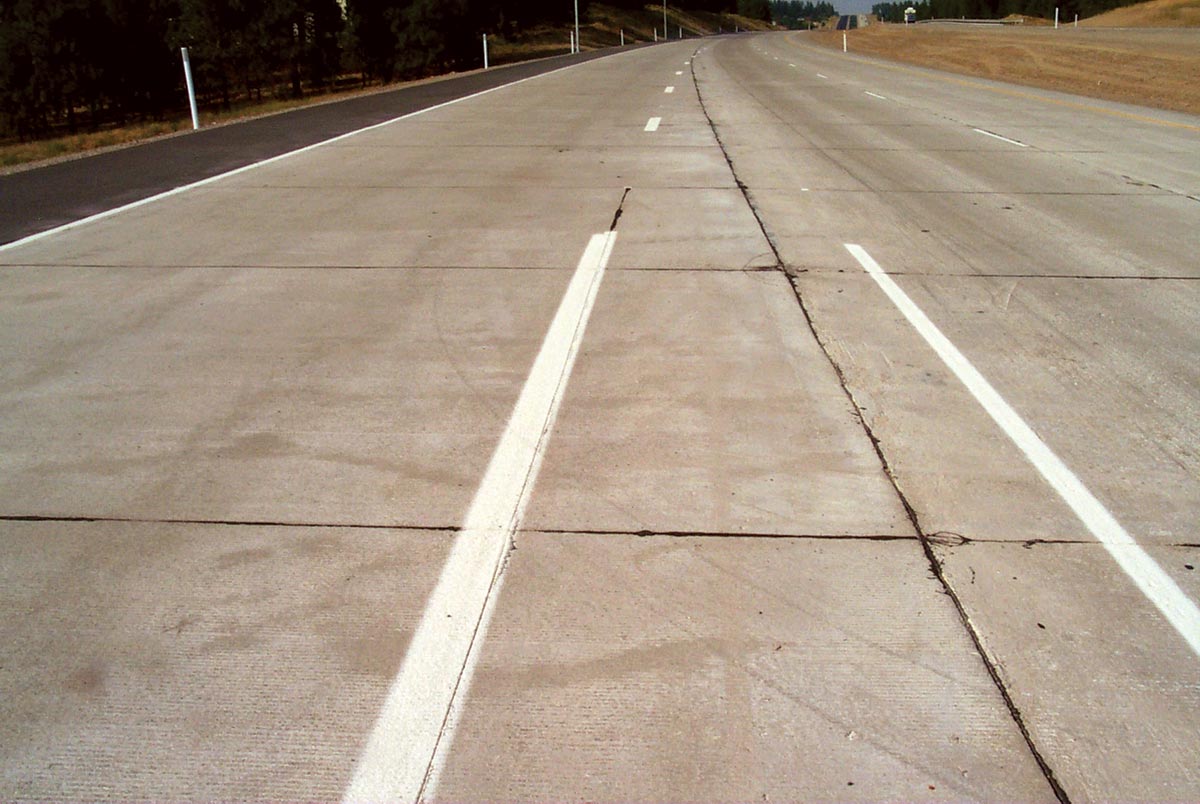The irc have brought out these revised guidelines for the design of plain jointed cement concrete pavements with and without tied concrete shoulders for an average daily commercial traffic volume of more than 450 vehicles with laden weight exceeding 3 tonnes.
Design of cement concrete pavement irc.
Construction specifications sub wades and subbases unlike o er paving materials the structural strength of a concrete pavement is largely within the concrete itself.
They are constructed using cement concrete.
Pavement quality concrete pqc is cement concrete made with large size aggregates in accordance with irc specifications and laid over a dry lean concrete sub base.
Irc 74 1979 tentative guidelines for lean cement concrete and lean cement fly ash concrete as a pavement base or sub base 60 00 20 00 73.
Following are the factors involved in the design process for concrete streets.
Check out the mix design for concrete roads as per irc 15 2011.
The stresses induced in concrete pavements are mainly flexural.
62 may be referred to for the design of low volume rural roads.
Construction of cement concrete roads.
A simple method of concrete mix design based on flexural strength for normal weight concrete mixes is described in the paper.
Guidelines for the analysis and design of cast in place voided slab superstructure first revision 183.
Thickness design 6 jointing 7.
Guidelines for design and construction of cement concrete pavements for low volume roads first revision 181.
The theory selected for the analysis of pavements is linear elastic layered theory in which the pavement is modeled as a multi layer system.
Critical load positions since the pavement slab has finite length and width either the character or the intensity of maximum stress induced by the application of a given traffic load is dependent on the.
Irc 73 1980 geometric design standards for rural non urban highways 120 00 20 00 72.
Subgrades and subbases 2.
This construction is used specifically for highway concrete pavements and for airport runway pavements as it can take heavy loads.
In this case the load carrying capacity is mainly due to the rigidity ad high modulus of elasticity of the slab slab action.
Where e is the modulus of elasticity of cement concrete in kg cm 3 0 10 is the poisson s ratio of concrete 0 15 is the slab thickness in cm and is the modulus of sub grade reaction.
Therefore flexural strength is more often specified than compressive strength in the design of concrete mixes for pavement construction.
Street classification and traffic 4.
Irc 75 2015 guidelines for the design of high embankments first revision 935 00 40 00 74.
The stresses induced in concrete pavements are mainly flexural.
Guidelines for the use of interlocking concrete block pavement.





